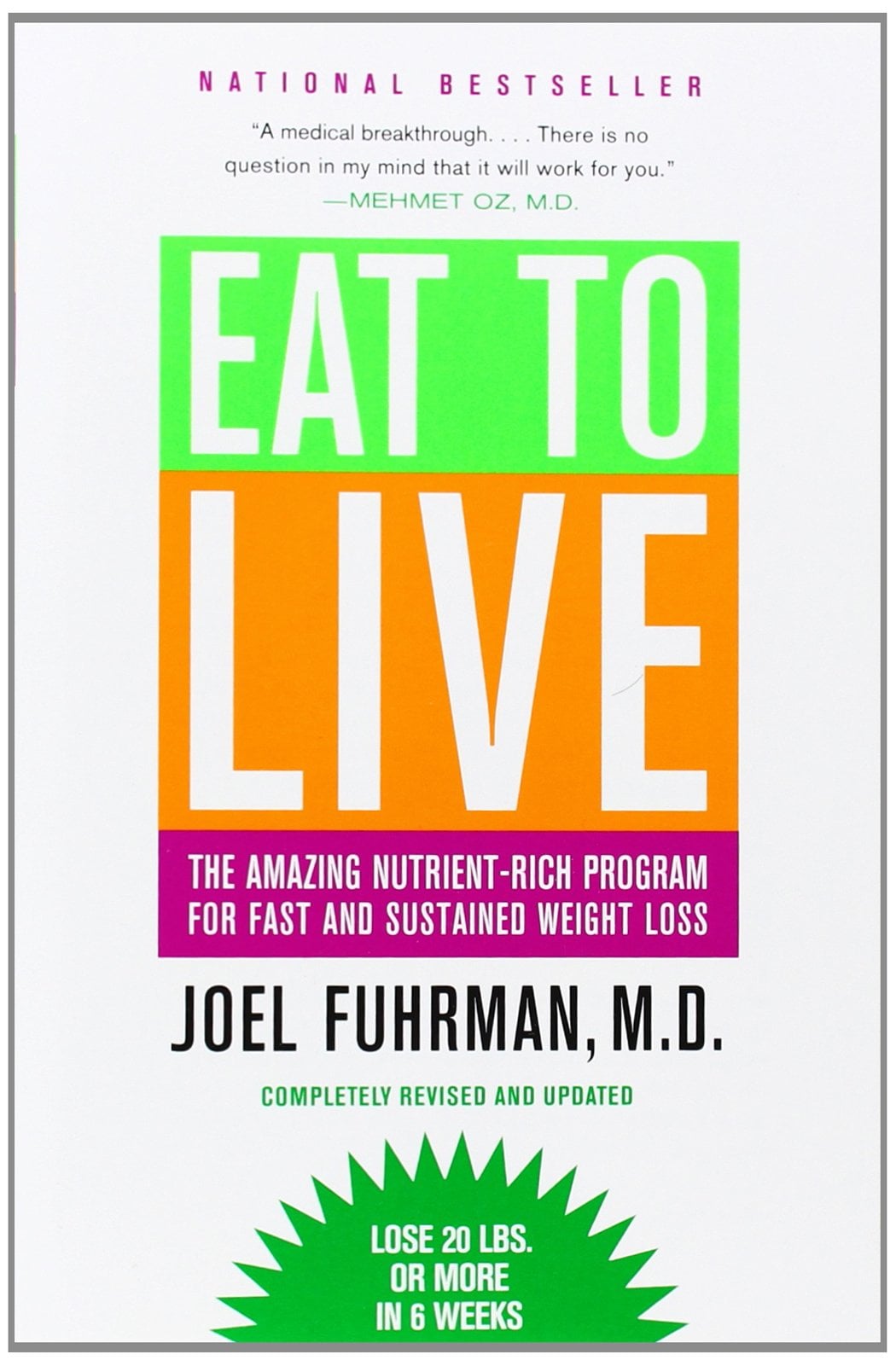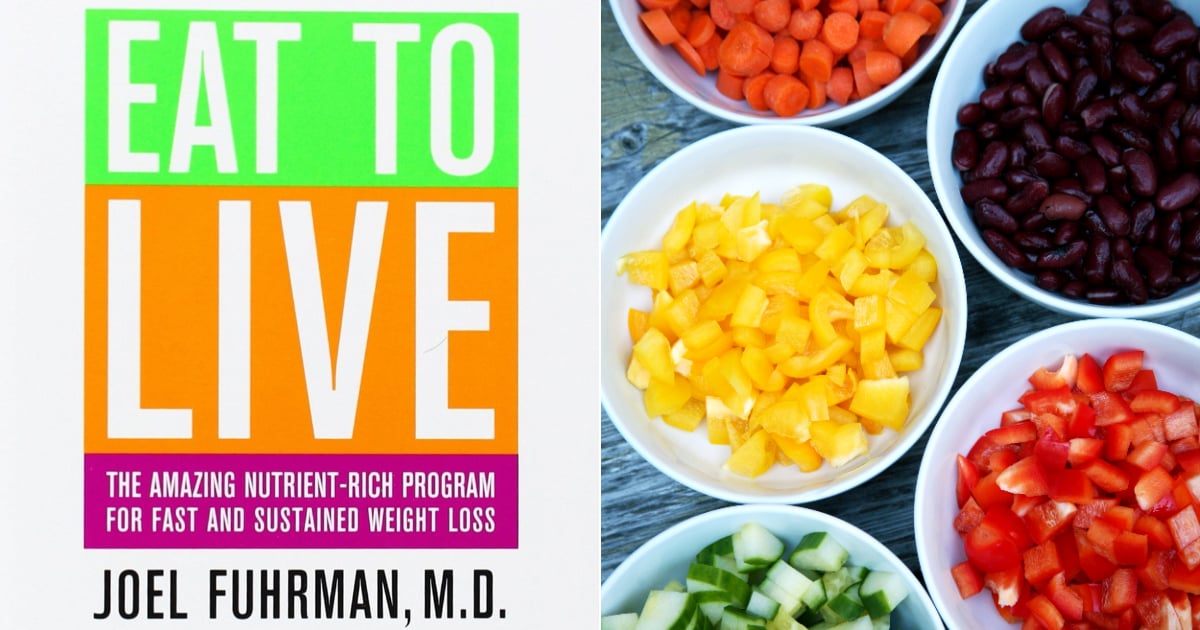
While looking for vegan recipe inspiration on Instagram, I stumbled on the hashtag #nutritarian, an eating lifestyle developed Joel Furman, MD, who wrote the book Eat to Live. After scrolling through gorgeously colored plant-based recipes and reading a little bit about the science behind a nutritarian diet, I immediately ordered the book so I could learn more.
The book begins with an explanation of why the standard American diet, full of processed, high-calorie, nutrient-deficient food, may lead to health problems, such as high blood pressure, heart disease, and cancer, as well as early death. He touches on the health risks of eating too much meat and dairy, the dangers of yo-yo dieting, and Dr. Furman’s simple solution — to eat high-nutrient, low-calorie foods.
A nutritarian diet focuses on nutrient-dense foods that prevent disease instead of causing it. It’s comprised of a plant-based diet that includes tons of greens, other veggies, fruit, legumes, and a limited amount of whole grains, nuts, and seeds. You also avoid processed foods like refined flours and packaged foods, sugar, oil, and salt. This way of eating is meant to help prevent disease, give you energy, help you naturally lose weight (and easily sustain it), and help lengthen your life.
If you’re new to the nutritarian lifestyle and ready to improve your health through diet, in the book Dr. Furman recommends starting out with the Six-Week Plan outlined below. He says that if you stick to this plan strictly for six weeks, your body will undergo a remarkable transformation as you notice changes in your physical and emotional well-being — you’ll feel better than you have in years. Your digestion will improve, you’ll lose cravings for unhealthy foods, and he says in the book, “you will be thrilled with how easily your weight drops.”
Six-Week Plan Explanation
There are many foods restricted on the Six-Week Plan, including meat and dairy, for the health risks mentioned above. There is also no snacking in between meals because you’re supposed to eat a huge veggie-packed meal so you’re so satisfied until your next meal. This also gives your digestive system a break, since many of us are used to snacking all day.
Oils aren’t permitted, even coconut or olive oil, as Dr. Furman’s says they add extra calories without the fiber to fill you up. He recommends getting your healthy fats through avocados, nuts, and seeds instead, since these offer protein and fiber as well. You are also to avoid added salt, since excess salt is linked to stomach cancer, high blood pressure, and osteoporosis. Foods naturally contain the sodium your body needs, and your taste buds will soon get used to not having extra salt.
The Eat to Live Six-Week Plan
Unlimited:
Eat as much as you want:
- All raw vegetables (goal: 1 pound)
- Cooked green and nongreen nutrient-rich vegetables: eggplant, mushrooms, peppers, onions, tomatoes, carrots, zucchini, cucumbers, celery, cauliflower (goal: 1 pound daily)
- Beans, legumes, bean sprouts, and tofu (goal: 1 cup)
- Fresh fruit (at least 4 daily)
Limited:
- Cooked starchy vegetables or whole grains: butternut and acorn squash, corn, white and sweet potatoes, turnips, parsnips, rice, bread, cereal, oatmeal (no more than one serving or 1 cup)
- Raw nuts and seeds (1 ounce max per day)
- Avocado (2 ounces max per day)
- Dried fruit (2 tablespoons max per day)
- Ground flaxseeds (1 tablespoon max per day)
Off-Limits:
- Dairy
- Animal products
- Between-meal snacks
- Fruit juice
- Oils
- Added salt

As stated in the book, here are Dr. Furman’s 10 easy tips for living with the Six-Week Plan:
- Remember, the salad is the main dish: eat it first at lunch and dinner. You can eat more than a pound if you want, but don’t worry if you’re too full and can’t eat the whole pound.
- Eat as much fruit as you want but at least four fresh fruits daily. Enjoy fresh fruit as dessert, or blend frozen fruit and make nice cream.
- Variety is the spice of life, particularly when it comes to greens. Explore all the different greens, raw veggies, cooked veggies, and use frozen veggies when you’re in a rush.
- Beware of the starchy vegetable. Limit high-starch grains and vegetables to one cup a day, and fill up on the raw and non-starchy veggies first. Refined grains such as bread and pasta should be even more restricted than the vegetable-based starches.
- Eat beans or legumes every day. You can have more than one cup if you choose, adding beans to smoothies, salads, and soups.
- Eliminate animal and dairy products. If this is too hard, eat lean fish once or twice a week and eggs once a week. No dairy products are permitted on the Six-Week Plan.
- Have a tablespoon of ground flaxseeds every day. This will offer you omega-3 fats that may protect against heart disease, reduce inflammation, and prevent age-related mental decline such as dementia and Alzheimer’s Disease. Add to smoothies, salad, oatmeal, or nice cream.
- Consume nuts and seeds in limited amounts, not more than one ounce per day. Pecans, walnuts, sunflower seeds, and other nuts and seeds offer disease protection, but they are high in calories and fat.
- Eat lots of mushrooms all the time. They make a great chewy replacement for meat and contain a variety of powerful phytochemicals that may decrease risk of chronic disease, especially cancer.
- Keep it simple. If you’re not sure what to eat, enjoy fruit for breakfast, a lunchtime salad with beans on top and more fruit, and for dinner, have a salad with two cooked veggies. Finish off with fruit or frozen fruit for dessert.
After completing the Six-Week Plan, you move on to the Life Plan, which offers more choices. Basically, you follow a nutritarian diet 90 percent of the time, which leaves 10 percent left or about 150 calories of low-nutrient foods such as chocolate, cheese, or a bagel. If you want to reintroduce meat and dairy back into your diet, he recommends 12 or fewer ounces per week. This means that on the Life Plan, you’re allowed to eat almost any kind of food, even a small cookie or candy bar, as long as the rest of the food you eat that day is plant-based and nutrient-dense.
